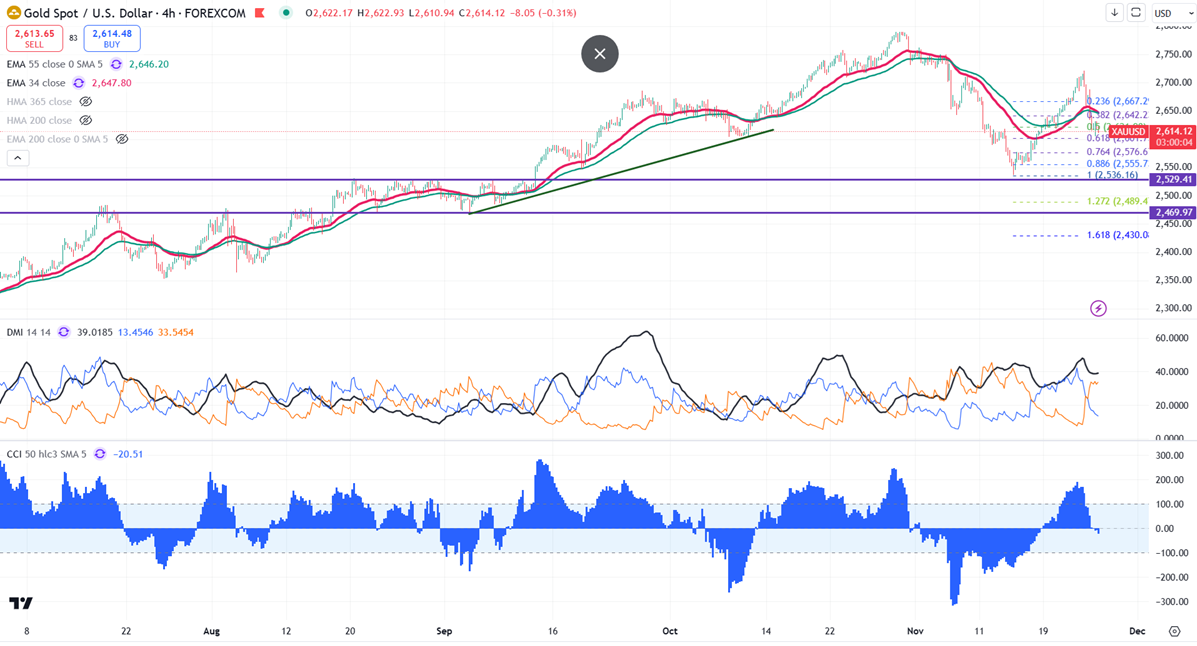Gold prices lost their shine as the U.S. imposed tariffs, hitting a low of $2,605 and currently trading around $2,612.
Overview of Trump's Tariff Plans
President-elect Donald Trump's new tariff plans include a 25% tariff on imports from Canada and Mexico, starting January 20, and a 10% tariff on goods from China. These tariffs are expected to raise consumer prices by about $2,600 per household annually and could disrupt existing trade agreements like the USMCA. Industries such as automotive and retail may face significant challenges due to increased costs. Investors are concerned about inflation and potential retaliatory tariffs from affected countries, reflecting a major shift in U.S. trade policy.
Implications for Federal Reserve Policy
Proposed tariff hikes could reduce the likelihood of further interest rate cuts by the Federal Reserve. If tariffs are implemented, they may increase inflation in the U.S., pushing prices above the Fed's 2% target. This could lead the Fed to stop cutting rates and possibly raise them to control inflation instead. As markets respond to these changes, investors may face more volatility in stocks and bonds due to shifting expectations about the Fed's monetary policy.
Technical Outlook for Gold Prices
As markets await U.S. PCE data for further direction, the technical outlook for gold prices shows them below short-term and long-term moving averages, indicating a bearish trend. Immediate support is at $2,600, with potential declines targeting 2,570/2,570/2,536/$2,500, and lower. Resistance sits at $2,635; breaking this level could push prices toward $2,660 or 2,680/2,680/2,700/$2,720. A strategy of selling on rallies around $2,648-50 is advised, with a stop-loss at $2,670 and a target price at $2,570.



 Robinhood Expands Sports Event Contracts With Player Performance Wagers
Robinhood Expands Sports Event Contracts With Player Performance Wagers 





























